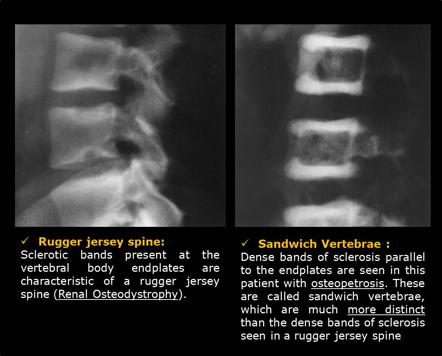READERS’/ FANS’ CORNER
Osteopetrosis is an extremely rare inherited condition in which there is increase in bone thickness (density); yet the bone breaks easily. There is overgrowth in bone with failure of bone resorption, due to irregularities in osteoclast function. Osteoclasts are bones cells that help to break down bone tissues by that, they help in maintenance and remodeling of bones.
Genetically, there are two forms of osteopetrosis which are: Autosomal Recessive Osteopetrosis (ARO) and Autosomal Dominant Osteopetrosis (ADO). ADO is further divided into ADO 1 and ADO 2 (Albers-Schonberg disease).
This condition is asymptomatic (without any sign or symptoms) until a patient has fracture. The fracture is after a minimal trauma or without any trauma. However, the patient may present with back and bone pain without any obvious trauma. Involvement of oral cavity (mouth) may result in frequent dental abscess, carious cavity and mandibular osteomyelitis https://www.healthgist.net/osteomyelitis-a-cause-of-bone-pain/.
DOCTORS’ CORNER
Clinical and radiological evidences are necessary for diagnosis. Radiological findings (skeletal survey) of osteopetrosis are:

1.Diffuse sclerosis affecting the skull, spine, pelvis and appendicular bones.
2. Bone modelling defects of the metaphysis of long bones showing funnel-like appearance (Erlenmeyer flask deformity) and characteristic lucent bands.
3. “Bone within a bone” appearance, particularly in the vertebrae (back bone) and phalanges (fingers and toes).
4. Sandwich vertebrae (dense bands of sclerosis parallel to the vertebral endplate).

BIOCHEMICAL INVESTIGATION
Tartrate-resistant acid phosphatase is elevated
BB isoenzyme of creatinine kinase is elevated.
TREATMENT
Presently, there is no treatment for osteopetrosis. Supportive treatment and genetic counselling are the mainstay of management. With brittle nature of the bones, all fracture should be treated by an experienced orthopedic surgeon. Good oral hygiene is also important due to high risk of infection and susceptibility for jaw fractures.
OTHER CONDITIONS THAT CAN CAUSE OSTEOSCLEROSIS:
These can be recalled using ‘3- M’s PROOF’ mnemonic.
M: Malignancy (Lymphoma and leukemia)
M: Myelofibrosis
M: Mastocytosis
S: Sickle cell disease
P: Paget’s disease and Pycnodysostosis
R: Renal osteodystrophy
O: Osteopetrosis
O: Others (sclerotic dysplasia, hyperthyroidism, hypothyroidism)
F: Skeletal fluorosis

Dr. Adeyemo Olusola is a medical graduate of Olabisi Onabanjo University, Ogun State, Nigeria along with certificate in advanced diploma in Principles of Nutrition, Management and Leadership, Dublin and Certificate in Global Health from London School of Hygiene and Tropical Medicine. In addition to his numerous certifications, he is a certified Telemedicine Physician from Harvard Medical School, USA. He is an avid reader of books from different oases of life, expert in data analysis. “So many a time, I have seen people die avoidable death because of lack of knowledge or information, falling victim of fate. There is then a necessity laid on us to help arm our society to the teeth, as a healthy society cannot be detached from an informed one. Hence, there is need for healthgist.net. We hope you will have a wonderful stay on our website.”

